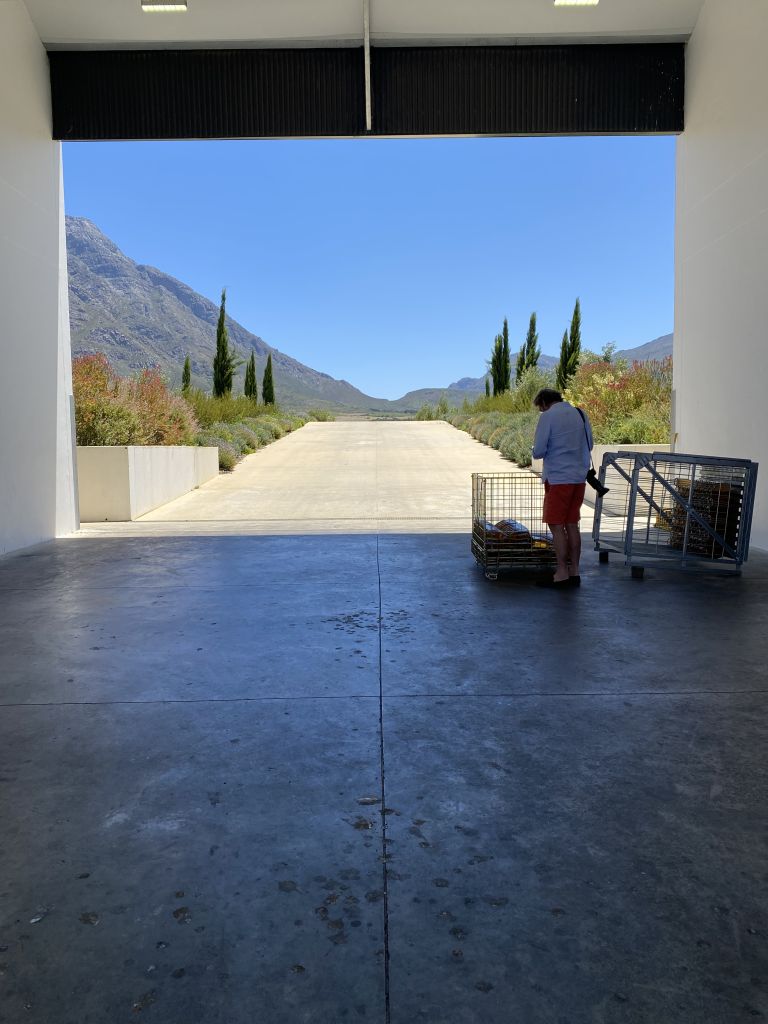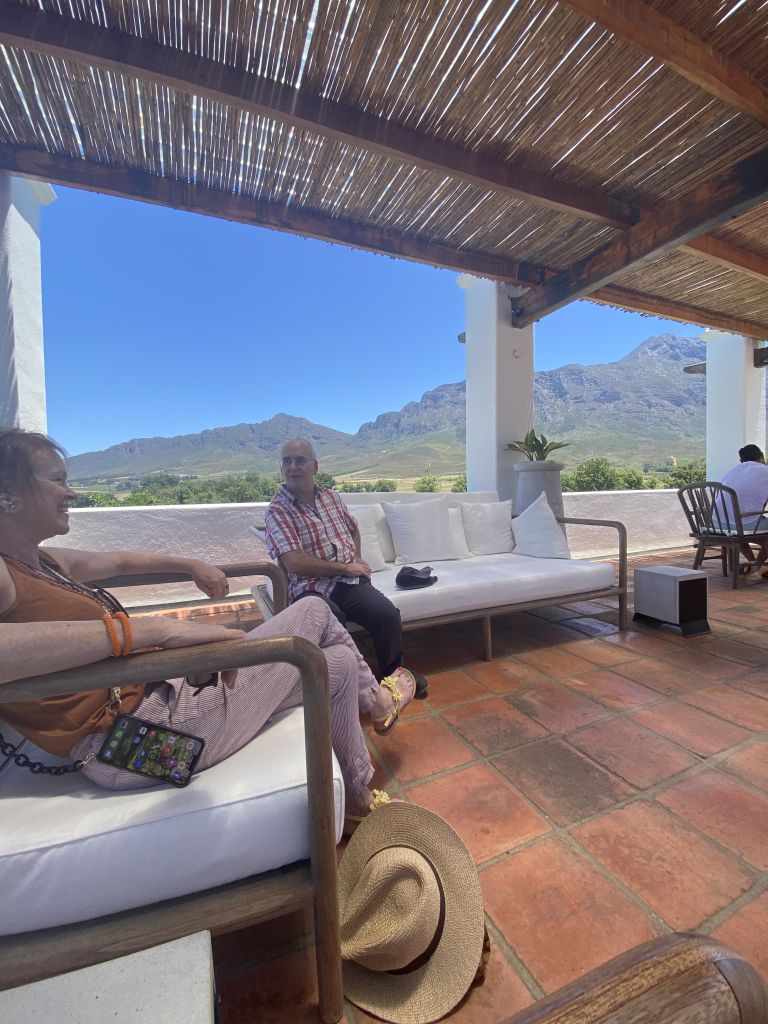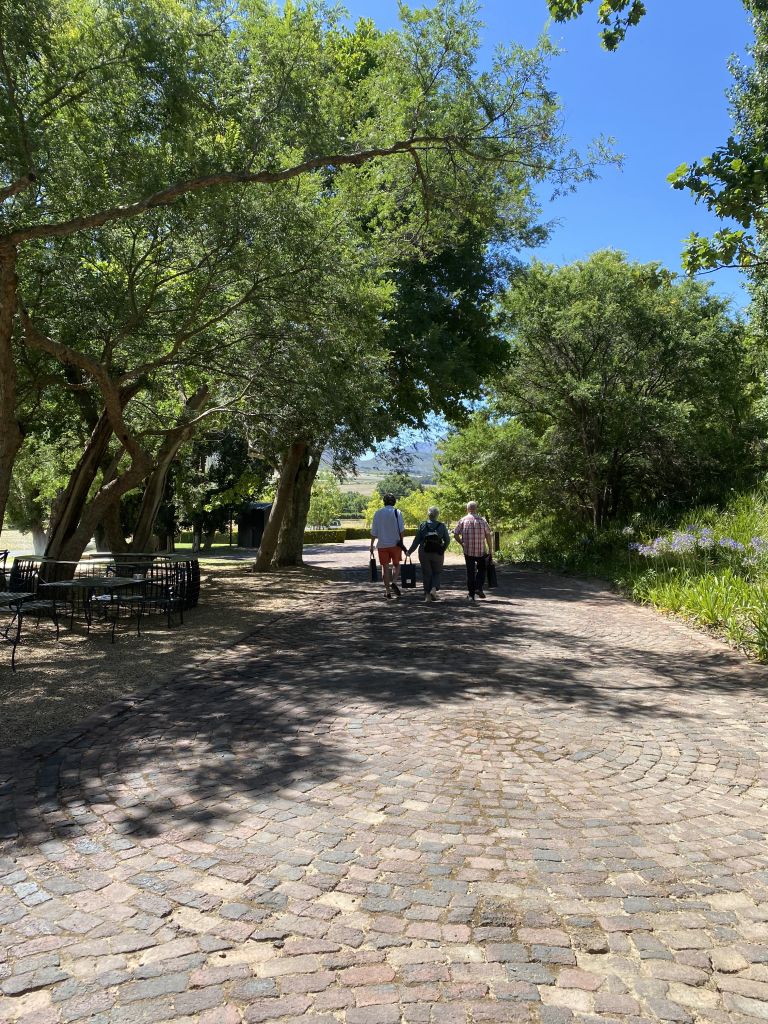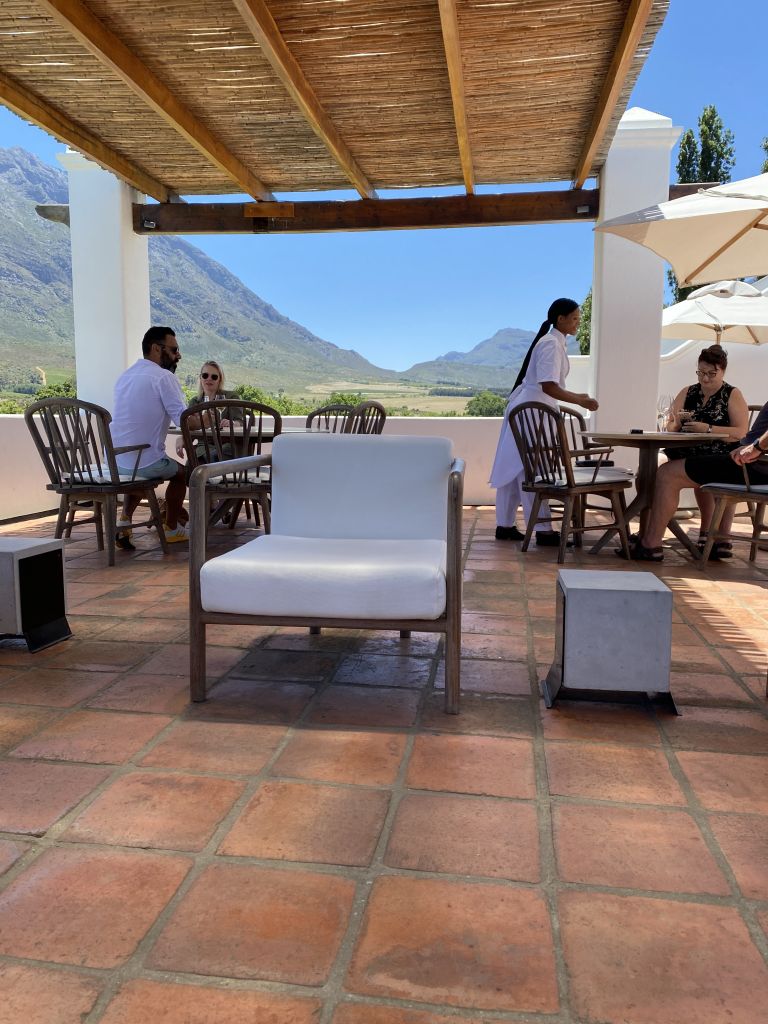SEARCH
SIGN UP FOR UPDATES

South Africa
Our second day in South Africa and we were bombing along to Tulbagh. Our destination? Twee Jonge Gezellen (two young gazelles) Estate to sample sparkling wine made in South Africa. The scenery is really magnificent with rugged mountains beckoning on either side. I’m not sure I’d take a walk on my own up them like I would at home!
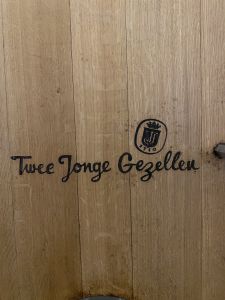

Krone Cellar, South Africa
The knowledgable Didi guided us around what was the first underground cellar in South Africa. They make vintage sparkling wine, nothing else. In Europe, most of the Champagne we buy is non-vintage. This is because the estates blend wine from different years (and grape varieties) to make Champagne. In a region where weather is unpredictable this allows them to make a consistent product. If they have an exceptional year, they may make a vintage Champagne from those grapes. Wine makers are not permitted to call Sparkling wine ‘Champagne’ in South Africa. They call it Method Cap Classique and this uses the same method as Champagne to produce the sparkling wine.
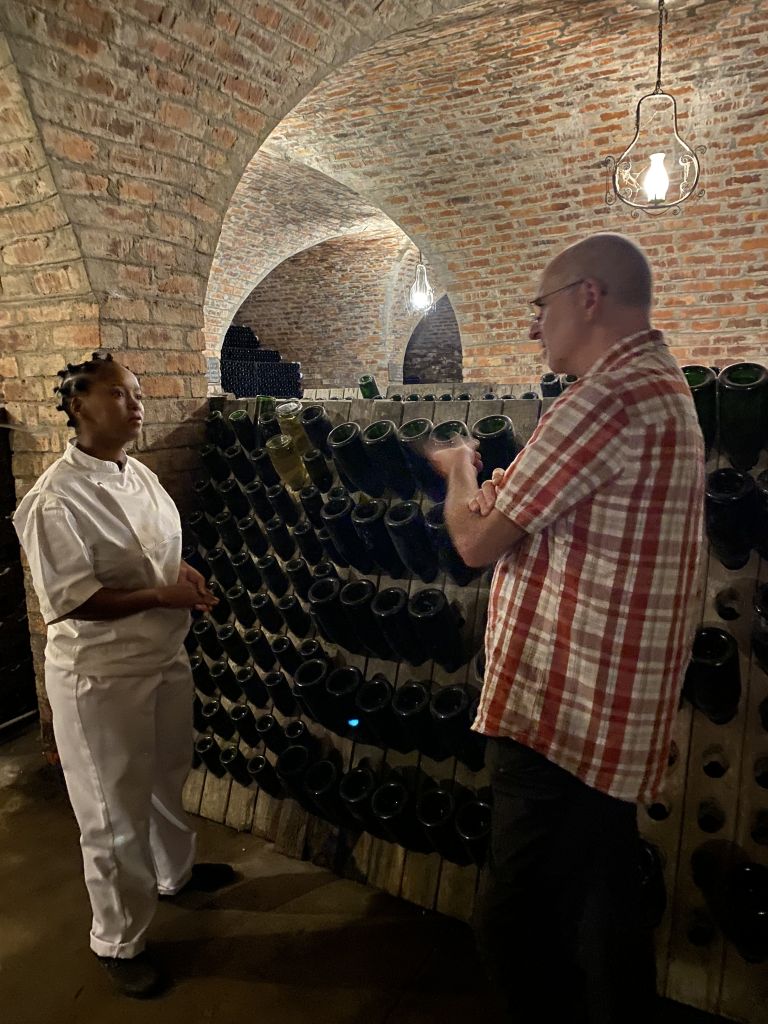
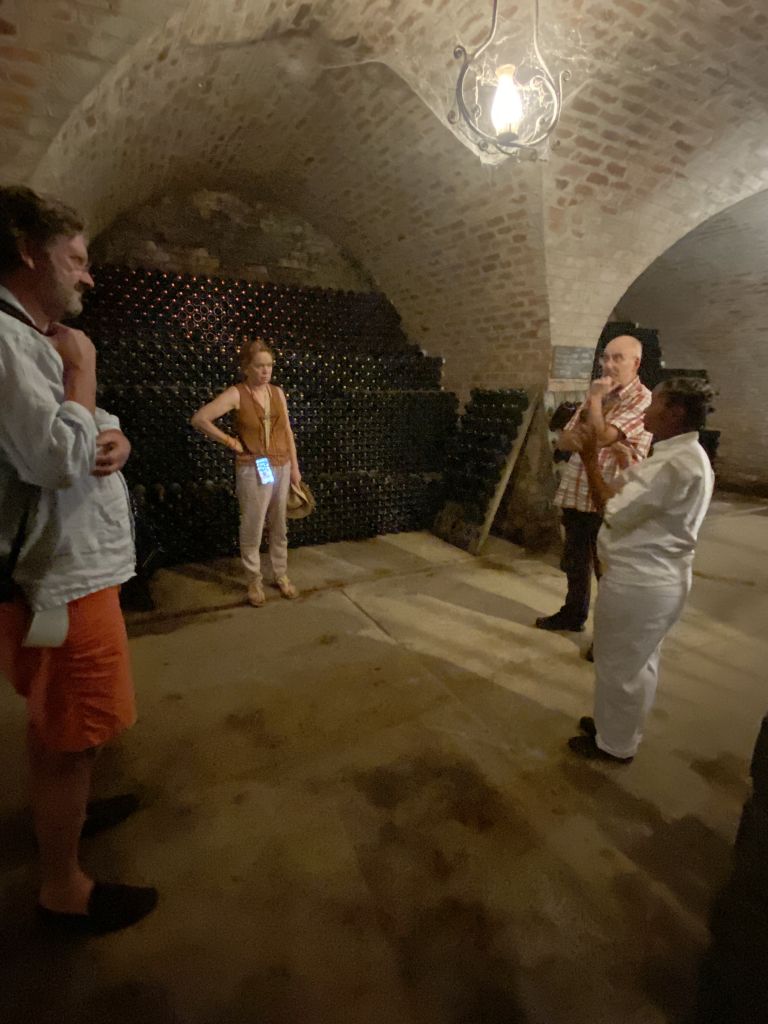
The Grape Harvest, South Africa
Now this was exciting. We normally visit vineyards in Europe during the boring months when nothing happens. For the first time, we were able to see and be present at the initial processing of the grapes after harvesting. These were Chardonnay grapes, and they were sweet! You can see them trundling up the conveyor behind Dylan in the picture. The next picture shows the immediately discarded skins after pressing. These grape skins are used on the land as fertiliser.
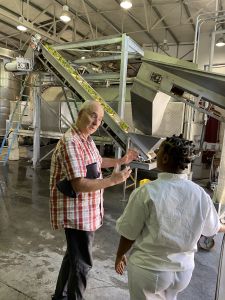
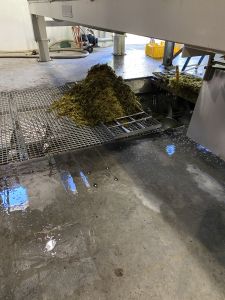
Ditching the Sediment
This is a gyro palette. In the first picture of Didi and Dylan above, you can see upside-down bottles behind them in a ‘pupitre’. This was for the purpose of ‘riddling’ to get rid of the sediment in the bottle. Each bottle is be turned a quarter turn, twice a day for several weeks. This slowly gets the sediment down to the neck of the bottle ready to remove it. Using these racks may be seen as somewhat old-fashioned now. For mass production, the gyro palette does this far quicker and with less effort. Can you see the sediment in the bottle below?
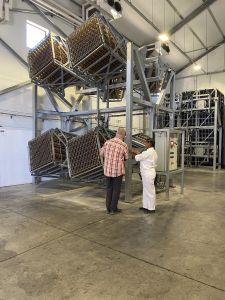
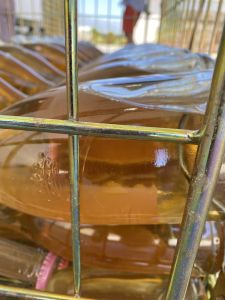
Disgorging
The wine bottles are put upside-down in the machine pictured below. The neck of the bottle is in a refrigerating solution which freezes the neck. Remove the cap and the pressure of the bubbles pops out the frozen plug with all of the sediment in it! The bottle is then ready to be sealed with a cork, foil and cage. Our friend Jeremy has just reported from New Zealand a newer method that we haven’t heard of – I look forward to hearing more wine explorers!
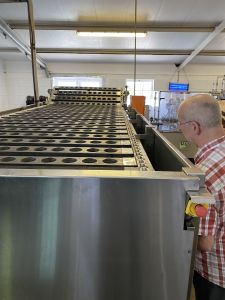
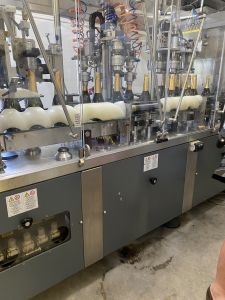
What a location!
Finally, we enjoyed a tasting of all of their range of sparkling wines. We all preferred the Amphora Blanc de Blanc. Blanc de blanc means it’s made from just white grapes (Blanc de Noir means white wine made from red). The amphora is that little clay pot you see in which some of the maturation takes place. Finally, here are some more stunning pictures, I mean, what a place to taste wine.
